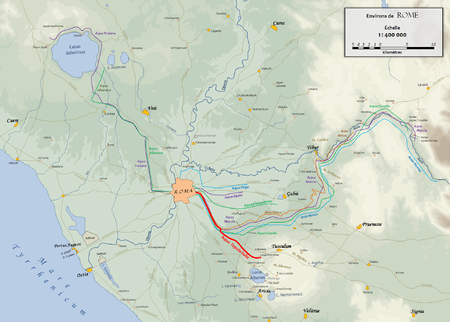Aqua Julia
33 BCAncient Roman aqueducts in RomeAugustan building projectsBuildings and structures completed in the 1st century BC

The Aqua Julia (or Iulia) is a Roman aqueduct built in 33 BC by Agrippa under Augustus to supply the city of Rome. It was repaired and expanded by Augustus from 11–4 BC.
Excerpt from the Wikipedia article Aqua Julia (License: CC BY-SA 3.0, Authors, Images).Aqua Julia
Viale di Porta Tiburtina, Rome Municipio Roma II
Geographical coordinates (GPS) Address Nearby Places Show on map
Geographical coordinates (GPS)
| Latitude | Longitude |
|---|---|
| N 41.896944444444 ° | E 12.510833333333 ° |
Address
caffè bistrot l'artigiano matto
Viale di Porta Tiburtina
00185 Rome, Municipio Roma II
Lazio, Italy
Open on Google Maps







